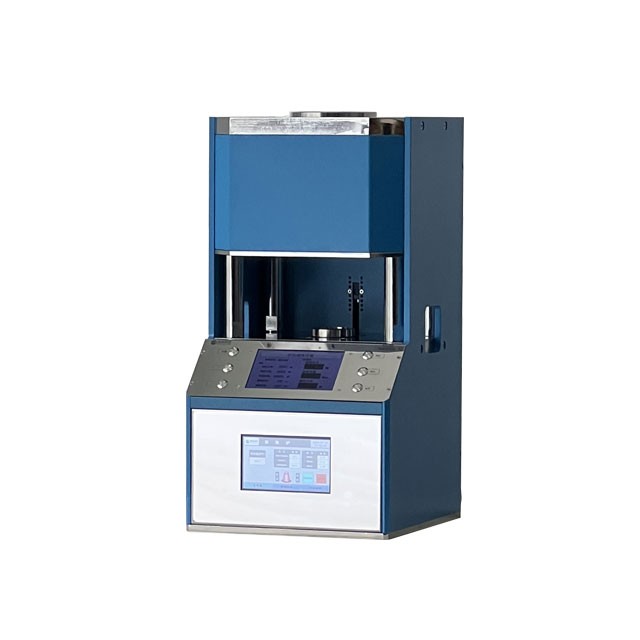
Customer-made Press
Automatic High Temperature Heated Hydraulic Press Machine with Heated Plates for Lab
Item Number : PHA
Price varies based on specs and customizations
- Pressure process
- Program pressurization-program pressure maintenance-timed pressure release
- Pressure holding time
- 1 second ~ ∞ seconds
- Cylinder stroke
- 80mm
- Heating temperature
- Maximum 1000℃
Shipping:
Contact us to get shipping details Enjoy On-time Dispatch Guarantee.
Why Choose Us
Reliable PartnerEasy ordering process, quality products, and dedicated support for your business success.
Introduction
The High Temperature Hot Press is a machine specifically designed for pressing, sintering and processing materials in a high temperature environment. It is capable of operating in the range of hundreds of degrees Celsius to thousands of degrees Celsius for a variety of high temperature process requirements.
Applications
High temperature hot presses are widely used in the following areas:
High-temperature alloy manufacturing: used to manufacture aero-engine components, spacecraft materials, etc.
Powder metallurgy: used for manufacturing precision parts and metal products with complex structure.
Ceramic materials: used for sintering and processing of high temperature ceramics.
Electronic materials: for manufacturing semiconductor materials and magnetic materials.
Detail&part

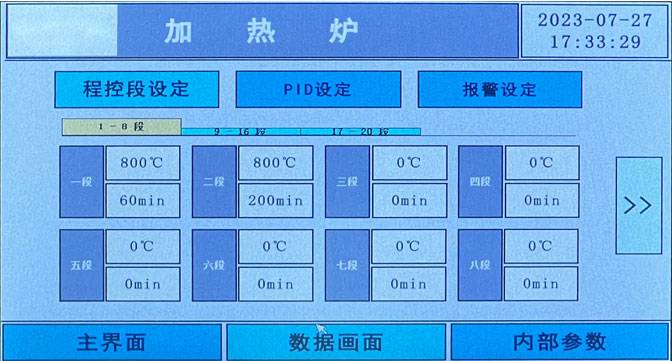
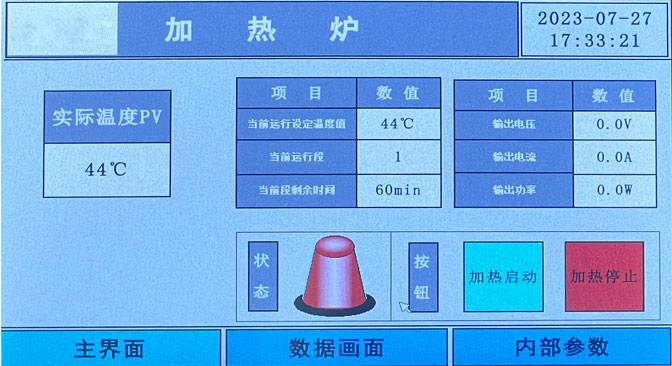
- Step 1: Select the data screen and enter the setting interface
- Step 2: Select "Programmable segment setting"
- Step 3: There are 20 temperature rise control programs in the program, select the first segment
- Step 4: According to the experimental requirements, set the temperature and heating speed of the first segment
- Step 5: If multiple temperature rise programs are required, you can set the 20 segments
- Step 6: After setting, press the main interface to return to the operation interface
- Step 7: On the main interface, press "Heating Start".
- Step 8: The equipment starts to heat up according to the program.
- Step 9: The equipment stops automatically after heating. If the setting is wrong, such as the set temperature is not reached within the specified time, the equipment will automatically terminate.
Principle
High-temperature hot presses utilize the physical and chemical effects of high-temperature and high-pressure environments to press, sinter, and process materials by applying high pressure and temperature to the materials, prompting the rearrangement or crystallization of the material molecules. Under high temperature conditions, the material atoms can cross the energy barriers more easily, which is conducive to chemical reactions, grain growth and material densification, and thus improve the mechanical properties and heat resistance of the materials, as well as the manufacture of complex structural materials.
Characteristics
High-temperature operating capability: Capable of stable operation at extremely high temperatures, up to thousands of degrees Celsius.
Precise control: Equipped with precise temperature control and pressure control systems to ensure accurate and repeatable processing.
Adaptation to diverse materials: capable of handling various types of materials, including metals, ceramics, composites, etc.
High performance: equipment design and process optimization allow for high productivity and the ability to produce high quality products in large quantities.
Advantages
Customized processing: Ability to tailor processes and production solutions to specific needs.
Innovative material development: supports the development and research of new materials and promotes the advancement of material science and engineering technology.
Enhancement of product performance: Improvement of mechanical properties, heat resistance and corrosion resistance of materials through high temperature hot pressing treatment.
Energy saving and environmental protection: optimize design and high-efficiency operation to reduce energy consumption and environmental impact.
Technical specifications
| Instrument model | PHA |
|---|---|
| Pressure range | 0-10T |
| Pressure process | Program pressurization-Program pressure maintenance-timed pressure release |
| Pressure holding time | 1 second~∞ seconds |
| Cylinder stroke | 80mm |
| Heating temperature | Maximum 1000℃ |
| Mold material | Nickel-based alloy (high temperature resistant material) |
| Sample size | Medium 10-30mm |
| Mold shape | Medium 50*90mm |
| Furnace diameter | Medium 60mm |
| Complete machine size | 400*380*780 (L*W*H) |
| Power supply | 220V 50Hz |
| Powder tablet press size diagram |  |
Operation steps
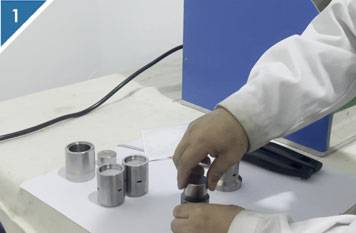
1. Place the sample in the mold.
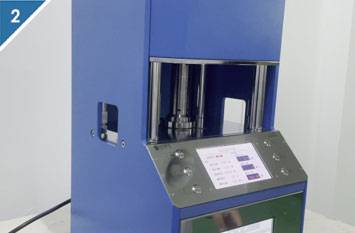
2. Place the mold in the hot press.
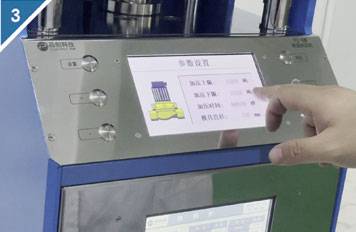
3. Set the required pressure and holding time.
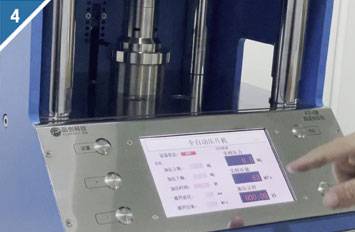
4. Pre-press the sample.
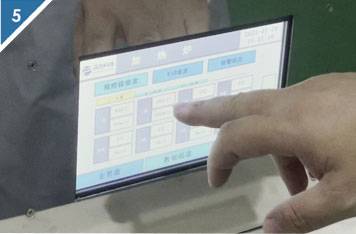
5. Enter the data screen, set the heating temperature and heating time, and you can set up to 20 heating programs.
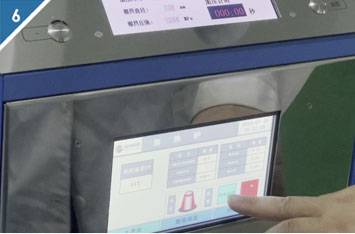
6. Return to the main interface, click Heating, and start heating.
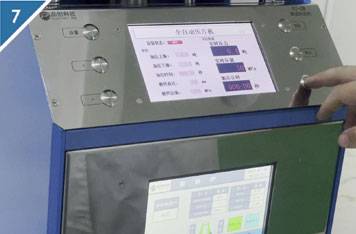
7. When the temperature reaches the set temperature, start pressurizing.
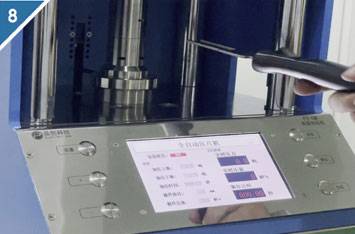
8. Take out the sample
FAQ
What Are Laboratory Hydraulic Machines?
What Are The Advantages Of Using Laboratory Hydraulic Machines?
What Are The Advantages Of Using A Hydraulically Heated Laboratory Press?
What Are The Applications Of Laboratory Hydraulic Machines?
What Does A Hydraulic Lab Heat Press Do?
What Are The Main Components Of A Laboratory Hydraulic Machine?
What Types Of Samples Or Materials Can Be Processed In A Hydraulically Heated Laboratory Press?
What Considerations Should Be Taken When Selecting A Laboratory Hydraulic Machine?
How Does A Hydraulically Heated Laboratory Press Work?
How Can The Performance Of A Hydraulically Heated Laboratory Press Be Optimized?
4.7
out of
5
Incredible precision and durability, a game-changer for our lab!
4.8
out of
5
Efficient and user-friendly, saves us so much time!
4.9
out of
5
Top-notch quality and performance, highly recommend!
4.7
out of
5
Fast delivery and excellent customer service!
4.8
out of
5
Value for money, this machine is a steal!
4.9
out of
5
Technologically advanced, perfect for our needs!
4.7
out of
5
Robust and reliable, handles high-volume tasks effortlessly!
4.8
out of
5
Ergonomic design makes operation a breeze!
4.9
out of
5
Impressive heat distribution, consistent results every time!
4.7
out of
5
Quick setup and easy to use, very satisfied!
4.8
out of
5
Highly durable, stands the test of time!
4.9
out of
5
Advanced features make it a leader in its class!
4.7
out of
5
Outstanding value, exceeded our expectations!
4.8
out of
5
Speedy delivery and excellent packaging!
4.9
out of
5
Superior quality, a must-have for any lab!
4.7
out of
5
Innovative design, simplifies our workflow!
4.8
out of
5
Reliable and efficient, a true asset to our team!
REQUEST A QUOTE
Our professional team will reply to you within one business day. Please feel free to contact us!
Related Products

Automatic Heated Hydraulic Press Machine with Heated Plates for Laboratory Hot Press 25T 30T 50T
Efficiently prepare your samples with our Automatic Heated Lab Press. With a pressure range up to 50T and precise control, it's perfect for various industries.

24T 30T 60T Heated Hydraulic Press Machine with Heated Plates for Laboratory Hot Press
Looking for a reliable Hydraulic Heated Lab Press? Our 24T / 40T model is perfect for material research labs, pharmacy, ceramics, and more. With a small footprint and the ability to work inside a vacuum glove box, it's the efficient and versatile solution for your sample preparation needs.

Manual High Temperature Heated Hydraulic Press Machine with Heated Plates for Lab
The High Temperature Hot Press is a machine specifically designed for pressing, sintering and processing materials in a high temperature environment. It is capable of operating in the range of hundreds of degrees Celsius to thousands of degrees Celsius for a variety of high temperature process requirements.

Manual Heated Hydraulic Press Machine with Heated Plates for Laboratory Hot Press
The Manual Heat Press is a versatile piece of equipment suitable for a variety of applications, operated by a manual hydraulic system that applies controlled pressure and heat to the material placed on the piston.

Laboratory Manual Hydraulic Pellet Press for Lab Use
Efficient sample preparation with small footprint Manual Lab Hydraulic Press. Ideal for material researching labs, pharmacy, catalytic reaction, and ceramics.

Laboratory Hydraulic Press Lab Pellet Press Machine for Glove Box
Controlled environment lab press machine for glove box. Specialized equipment for material pressing and shaping with high precision digital pressure gauge.

Laboratory Hydraulic Press Split Electric Lab Pellet Press
Efficiently prepare samples with a split electric lab press - available in various sizes and ideal for material research, pharmacy, and ceramics. Enjoy greater versatility and higher pressure with this portable and programmable option.

Vacuum Hot Press Furnace Machine Heated Vacuum Press
Discover the advantages of Vacuum Hot Press Furnace! Manufacture dense refractory metals & compounds, ceramics, and composites under high temp and pressure.

Square Lab Press Mold for Laboratory Applications
Create uniform samples easily with Square Lab Press Mold - available in various sizes. Ideal for battery, cement, ceramics, and more. Custom sizes available.

Easily release samples from our lab infrared press mold for accurate testing. Ideal for battery, cement, ceramics, and other sample preparation research. Customizable sizes available.

Customer Made Versatile CVD Tube Furnace Chemical Vapor Deposition Chamber System Equipment
Get your exclusive CVD furnace with KT-CTF16 Customer Made Versatile Furnace. Customizable sliding, rotating, and tilting functions for precise reactions. Order now!

Discover precision polygon press molds for sintering. Ideal for pentagon-shaped parts, our molds ensure uniform pressure and stability. Perfect for repeatable, high-quality production.

Square Bidirectional Pressure Mold for Lab Use
Discover precision in molding with our Square Bidirectional Pressure Mold. Ideal for creating diverse shapes and sizes, from squares to hexagons, under high pressure and uniform heating. Perfect for advanced material processing.

KT-PE12 Slide PECVD System: Wide power range, programmable temp control, fast heating/cooling with sliding system, MFC mass flow control & vacuum pump.

The high precision automatic diamond wire cutting machine is a versatile cutting tool that uses a diamond wire to cut through a wide range of materials, including conductive and non-conductive materials, ceramics, glass, rocks, gems, jade, meteorites, monocrystalline silicon, silicon carbide, polycrystalline silicon, refractory bricks, epoxy boards, and ferrite bodies. It is especially suitable for cutting various brittle crystals with high hardness, high value, and easy to break.

Vacuum Heat Treat and Pressure Sintering Furnace for High Temperature Applications
Vacuum pressure sintering furnaces are designed for high temperature hot pressing applications in metal and ceramic sintering. Its advanced features ensure precise temperature control, reliable pressure maintenance, and a robust design for seamless operation.

Laboratory Jar Mill with Agate Grinding Jar and Balls
Grind your materials with ease using Agate Grinding Jars with Balls. Sizes from 50ml to 3000ml, perfect for planetary and vibration mills.
Related Articles

The Physics of Flawless Materials: Deconstructing the Hydraulic Hot Press
Discover how the synergy of Pascal's Law and thermal energy in a hydraulic hot press enables precise, repeatable material bonding and forming.

More Than a Squeeze: The Physics and Psychology of the Hydraulic Hot Press
An insight into the hydraulic hot press, where Pascal's Law meets thermodynamics to reshape materials. A story of force, heat, and control.

Why Your Composite and Polymer Parts Keep Failing: The Secret Is Simultaneous Heat and Pressure
Struggling with inconsistent composite or polymer bonding? Discover why separate heating and pressing fails and how a hot hydraulic press ensures repeatable, high-quality results.

Why Your Molded Parts Fail: The Hidden Truth About Heat and Pressure
Struggling with warped or inconsistent parts? Learn why pressure isn't the problem and how precise thermal control in a hydraulic press is the key.

Pressure and Heat: Forging Certainty into Matter
A hot press doesn't just shape materials; it eliminates hidden flaws and forges atomic-level trust. Learn the physics of material integrity.

Why Your Molding & Curing Results Are Inconsistent—And How to Fix It
Frustrated with warped parts and failed molding? Discover the hidden reason your hydraulic press may be the problem and how the right tool ensures consistent results.

Why Your Lab Press Fails: It's Not the Tonnage, It's the Steel
Discover the hidden reason your hydraulic press gives inconsistent results. Learn why the choice of steel is more critical than tonnage for safety and accuracy.

Beyond Heat: Why Pressure is the Deciding Factor in Advanced Materials
Explore the critical trade-offs between hot pressing and sintering. Learn how pressure transforms material properties, costs, and project outcomes.

Force and Fire: A Guide to Material Transformation with Hot and Cold Pressing
Hot and cold pressing aren't just about temperature; they are different philosophies of material creation. Learn when to use force vs. force and fire.

The War Against Voids: Mastering Material Density with Heat and Pressure
Hot pressing uses graphite tooling to apply extreme heat and pressure, eliminating microscopic voids to forge ultra-dense, high-performance materials.

The Architecture of Atoms: Why Hot Press Forming Creates Superior Materials
Discover how hot press forming uses heat and pressure to eliminate microscopic flaws, creating stronger and more complex parts than cold forming.

The Pressure-Temperature Dialogue: Mastering Material Consolidation
Learn why hot pressing isn't about fixed values, but a precise dialogue between temperature, pressure, and your material's unique properties.

